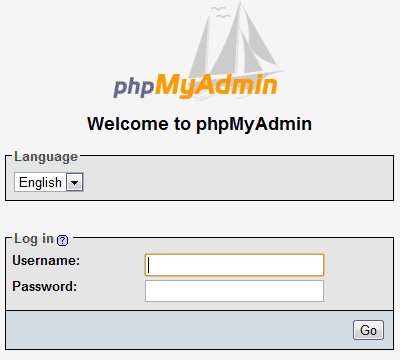Install phpMyAdmin on Windows 7 - How to instructions
I installed MySQL, PHP and Apache on Windows 7 as per your instructions without any problem. I then tried to install on phpMyAdmin on the same Windows 7 computer using instructions from another web site as I couldn't locate these on yours. But I haven't been successful. Can you help me by giving steps to load phpMyAdmin on my PC like you did it for MySQL, PHP and Apache? Thanks and regardsRakesh GiriI've been meaning to put the instructions on how to install phpMyAdmin on a Windows 7 computer for some time now. However, it was never a priority as:
- I've always used the MySQL Command Line Client and am very comfortable with it.
- I haven't been able to spare some time.
- I thought this should be a fairly simple thing to do even for someone who is just starting out - this was "partly" an incorrect assumption.

Installation instructions: phpMyAdmin on Windows 7
Before we run through the detailed step by step instructions (below), please note that I've assumed that you've installed PHP, MySQL and Apache based on the instructions I provided on other articles (links at the bottom). This is important. If you haven't done that, remember to change the directory / folder path accordingly.- The first step is to get the phpMyAdmin download file. I chose phpMyAdmin-3.3.8-english.zip from www.phpmyadmin.net/home_page/downloads.php. I could have downloaded the 'all languages' file but English is all I want and use.
- I unzipped the file to my document root which is C:/websites. This creates a folder called phpMyAdmin-3.3.8-english (yes, a very long name) which itself contains tons of subfolders. As a heads up, I'll change the name of this folder in a later step.
Important: The phpMyAdmin files need to be installed in the document root. You might have changed this when setting up Apache - check the web server configuration file, httpd.conf. - As you can gather, PHP installation on a Windows 7 computer is a simple matter of unzipping the file to the document root. Now on to configuration (also very easy).
- Launch Notepad and open config.sample.inc.php you'll find in the phpMyAdmin install folder. Save this file as config.inc.php.
- Locate the following line:
$cfg['blowfish_secret'] = ''; /* YOU MUST FILL...
Enter a value of choice, for example:$cfg['blowfish_secret'] = 'ba17c1ec07d65003'; /* YOU MUST FILL...
Save the config.inc.php file once again and close the Notepad window as its work is done! - Optional: I renamed the phpMyAdmin install folder name from phpMyAdmin-3.3.8-english to a more manageable phpMyAdmin (and as you know, in Windows 7, the case doesn't make a difference).
- Open the PHP configuration file php.ini in Notepad. You'll find this file in the folder in which you installed PHP. This would be C:/php, if you followed my instructions.
- Locate the following two strings and remove the semi-colon at the beginning:
;extension=php_mbstring.dll
Save php.ini file.
;extension=php_mcrypt.dll - Since PHP configuration and settings have been changed, we need to restart the web server. The easy way to do this is to click on its icon in the System Tray (known as Notification Area in Windows 7) and chose Apache 2.2 -> Restart.
- Launch a web browser window and point it to http://localhost/phpmyadmin/index.php. You'll get the login page as below.

Note: Change the address as per the name of the phpMyAdmin install folder. - Login now with your MySQL username and password.
Problem faced when installing phpMyAdmin on Windows 7 and how I solved them
The installation steps I detailed above don't mention the small problem I faced - there were two actually. To know more, please refer the following links- Cannot load mcrypt extension. Please check your PHP configuration
- The mbstring PHP extension was not found
Installing Apache, PHP and MySQL
As you know, without MySQL, you'll have no use for phpMyAdmin. So here are the links on how to install the database application as well as a web server and PHP on your computer:- Install Apache on Windows 7
- How to install PHP on Windows 7
- Instructions to install MySQL on Windows 7
Page contents: Install phpMyAdmin on Windows 7 operating system: Detailed instructions for the beginner with notes on the problem encountered and the solution.









No comments:
Post a Comment